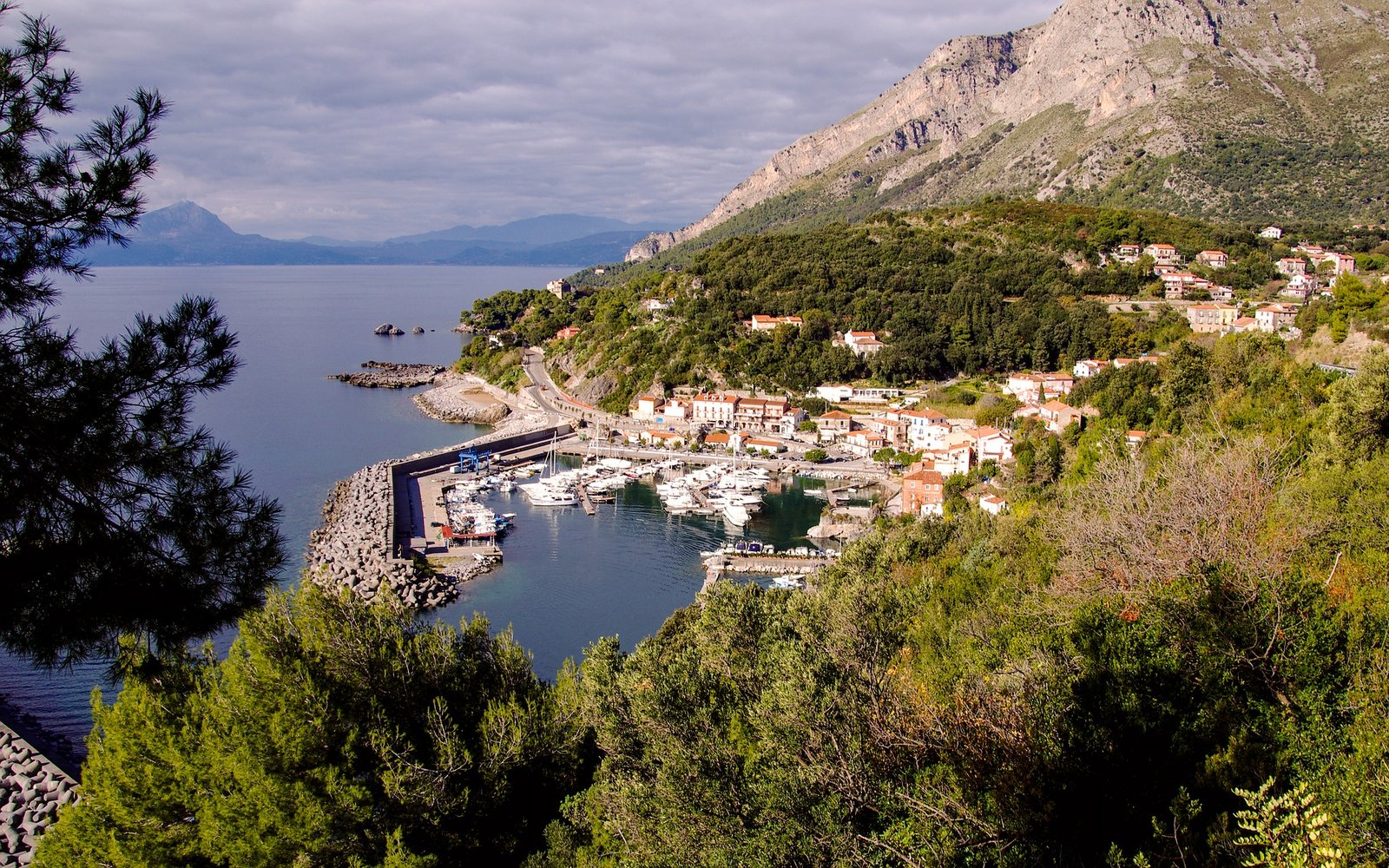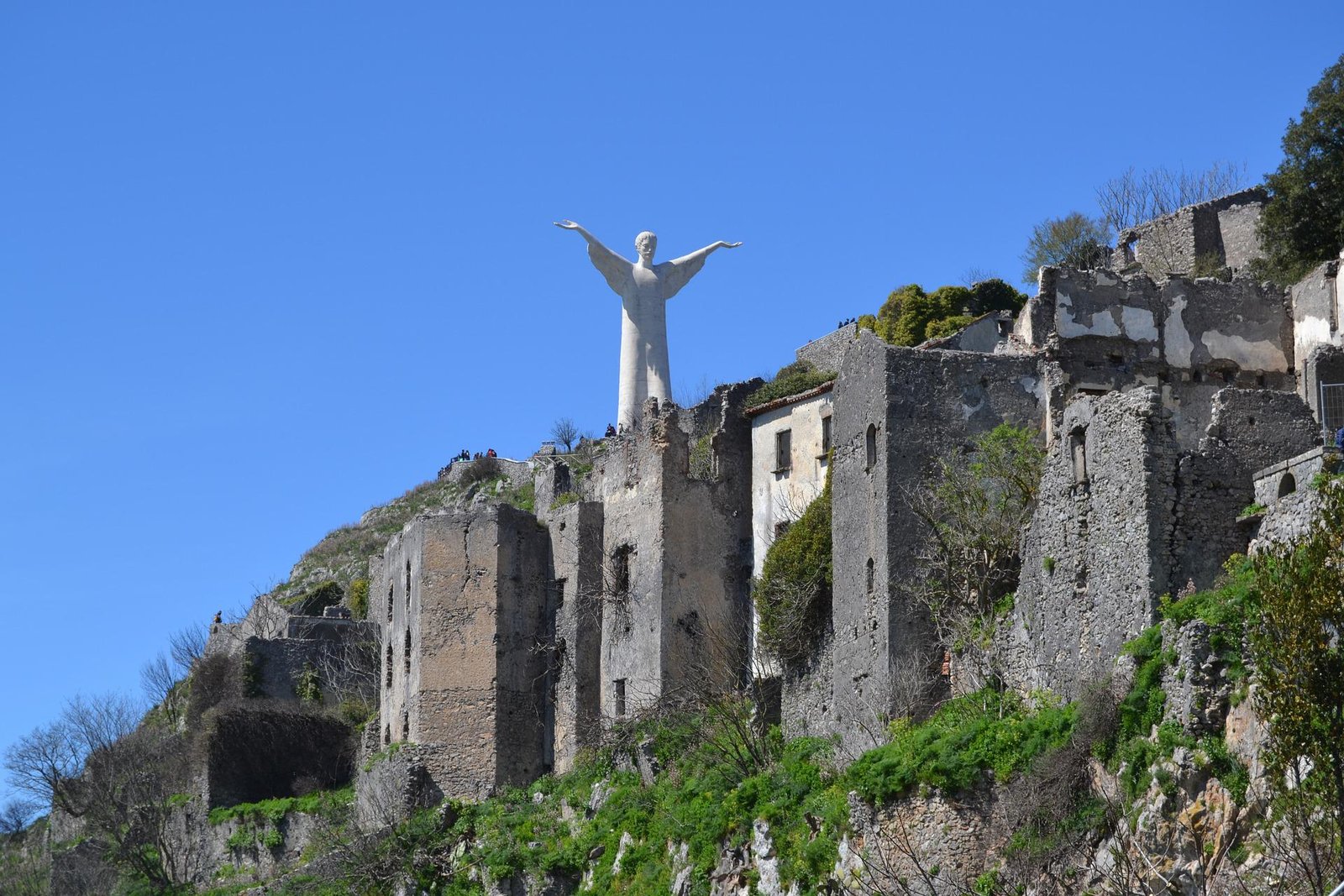
Visiting Basilicata and moving quickly from the mountains to the sea, from the heights to the coast, from landscapes immersed in greenery to enchanting beaches is possible if you choose to stay in the Valle del Noce: a unique and varied territory that can adapt to every travel idea and need.
The Noce Valley is a valley located in the province of Potenza, near the Noce-Castrocucco river in the southern part of the region, right on the border with Calabria. There are six towns that comprise this territory: one of the most populated is Lauria, which still preserves a medieval layout; then we find the village of Lagonegro; Nemoli, a small town that still preserves Byzantine testimonies; Trecchina, a small perched centre of ancient origins; Rivello, immersed in nature; and Maratea with its beautiful beaches. The geographical area of the Valle del Noce is surrounded by the sea coast of Castrocucco and the woods that occupy the peaks of the Lucanian Apennines. Its geographic conformation presents different heights: in some places it reaches 2,000 metres above sea level and in others the area is flat and in line with the coastline, for a variety of landscapes that range from mountainous to marine within a few kilometres and where thick cliffs give way to green hills or beautiful beaches. The entire territory is characterised by varied natural habitats, home to tree and flower species such as orchids, the black alder, the black poplar, and various species of willows. In the Valle del Noce area we can still find, as in the past, sheep and goat farms, while on the coast fishing is much practised, providing fresh ingredients for dishes that retain all the scents of the sea. The entire area of the Noce Valley, in addition to breathtaking landscapes and unique ecosystems, is characterised by a very ancient history, as demonstrated by the prehistoric finds that have been unearthed in the area. Moreover, each village in the Noce Valley has its own peculiarities, so much so that the thought of visiting them all can be the right inspiration for an on-the-road trip.
The Valle del Noce, in its 589 kilometres of extension, offers many things to do and all very different from each other: the heterogeneous and varied territory, in fact, reserves experiences in every sphere, all of great interest and charm and all extremely linked to the identity of the area. The six towns included in this area are all worth a visit. Maratea stands out for its beaches and the famous Cristo Redentore (Christ the Redeemer), which towers over the town from Mount San Biagio; Lauria is characterised by its narrow streets, churches and the medieval Castle of Ruggiero; Lagonegro and Nemoli are worth a visit for the beauty that characterises their villages, which are ancient and immersed in a dimension of peace and relaxation. The same can be said of Trecchina, a garden city, listed among the Authentic Villages of Italy, and of Rivello, rich in noble palaces where you can visit the 16th-century Convent of Sant'Antonio. Not only art and history, but also nature and outdoor sports: in the Valle del Noce, in fact, the landscape offers many attractions. From each municipality start trekking and hiking itineraries that, classified according to duration and difficulty, lead to panoramic points or points of notable historical and natural interest. In Maratea, it is also possible to go horseback riding on dirt roads following different routes or paragliding, flying over the city; while in Rivello, those seeking an adventurous and evocative experience can go canyoning in the waters of the Bitonto torrent, a tributary of the Noce river, which has its source at the foot of Mount Sirino. In the Valle del Noce, every traveller will be able to discover a new face of Basilicata and choose what to do according to their ideal type of trip or stay, in the certainty of living authentic experiences, representing the soul of an area still far from mass tourism, which lends itself to being experienced to the full, in an absolutely unconventional way.
There are many typical dishes in the Valle del Noce: each municipality has its own recipes and gastronomic traditions and it would be very difficult to list them all. However, it is possible to trace flavours that can be found throughout the area. The main ingredient on the tables of the Valle del Noce is pork: pork sausages, also to be eaten with polenta, and soppressate or prosciutto, with an intense and authentic flavour to be enjoyed with the 'biscotto a otto', a salted biscuit in the shape of an elongated eight, sometimes flavoured with fennel, are produced artisanally throughout the region. Traditional pasta is handmade with durum wheat flour, salt and water. The most popular are lagane with chickpeas, 'rascatieddi', a long grilled pasta, fusilli and strangolapreti to be eaten with meat sauce or lighter sauces. In a land where cattle breeding and sheep-farming are still practised, cheeses are a food not to be missed: pecorino and fresh or salted ricotta are typical of the area and, near Maratea, Massa mozzarella and caciocavallo are famous. One of the symbolic ingredients not only of the Valle del Noce, but of the whole of Basilicata, is chilli pepper, which is used as a condiment in almost all dishes: the taste, despite being strong, retains fragrant and pleasant notes. The typical desserts of the Valle del Noce are made with few ingredients, simple and all deeply tied to the territory. Zeppole, for example, are made from a fried dough of water and flour flavoured with wine, to be eaten with sugar or honey; bocconotti, on the other hand, are shortcrust pastries filled with creams or jams. Perhaps one of the most typical and special sweets, however, is sanguinaccio: a chocolate cream with a soft and silky texture made from pig's blood. This recipe is very old and has its roots in the peasant traditions of the past; the cream, used to accompany chiacchiere at carnival or as a filling for cakes and tarts, has an intense and unmistakable flavour and is absolutely to be tasted.
In the Valle del Noce, there are many things to do and events to attend, covering all periods of the year. Each municipality, in fact, has a strong identity that lives through events, festivals and fairs that celebrate the territory, the environment and ancient traditions. In Nemoli, during the month of June on the occasion of Corpus Domini, the main street is covered with a carpet of broom flowers and rose petals arranged in the shape of monstrances and chalices, while the Carnival period coincides with the Polenta Festival: on this occasion, a sort of quest is organised by the young people of the town, with whose proceeds polenta is prepared and eaten amidst parades of floats and traditional masks. Carnival has a strong tradition in Basilicata: in Trecchina, there is the tradition of the Cantacronze, a character dressed as a shepherd, who sings satirical songs about the town's characters. Trecchina is also famous for its Chestnut Festival, which falls in October and is an occasion to celebrate this product and its by-products, which are of local excellence. A religious festival that is very much felt by the local community, and not only, is the feast of San Biagio, which is celebrated in Maratea in February and the second week of May: on this day, the arrival of the Saint's relics to the island of Santo Ianni is commemorated. Statue and relics are carried in procession through the streets to Capocasale, where the mayor symbolically hands over the keys of the city to San Biagio. In Rivello, in August, there is the pumpkin flower festival, a gastronomic event dedicated to this product to be tasted in all its variations, amidst popular music and tastings dedicated to typical local dishes. Also in August, Lauria celebrates the Folk Festival, an event that promotes local traditions and food and wine production to enhance the regional territory and its ancient peasant culture, celebrated with music, shows and popular dances. During the Christmas period, moreover, the Valley's villages are coloured with decorations and markets, and visiting them will be an opportunity to immerse oneself in poetic and characteristic atmospheres.
